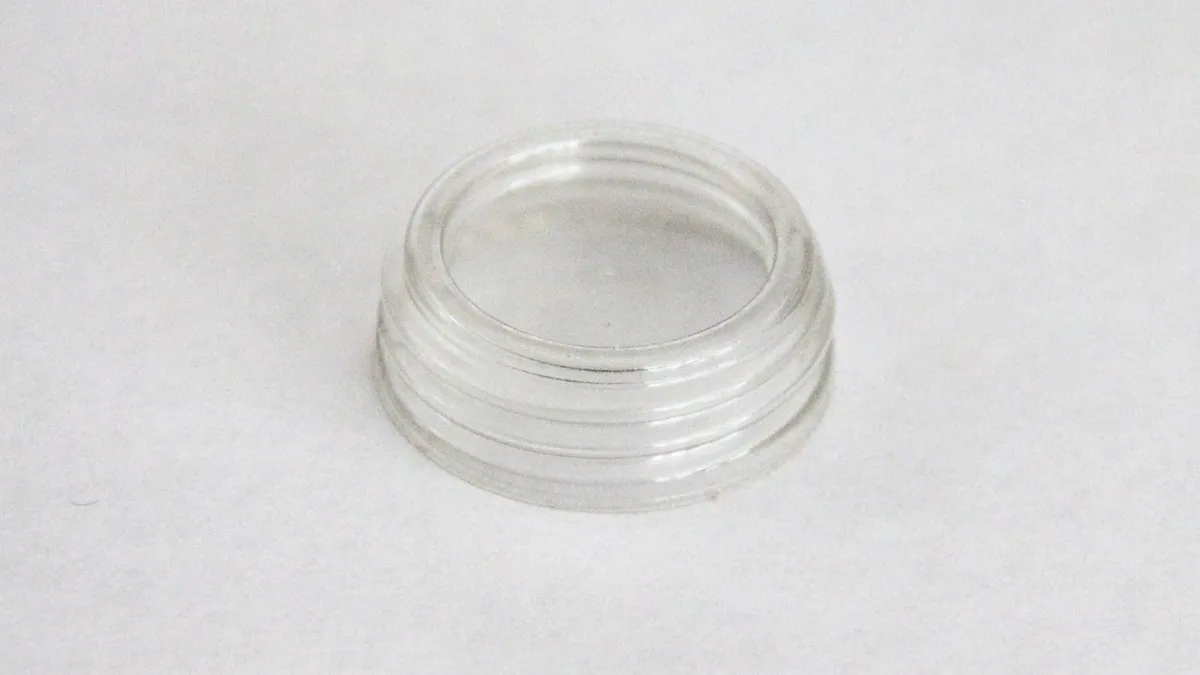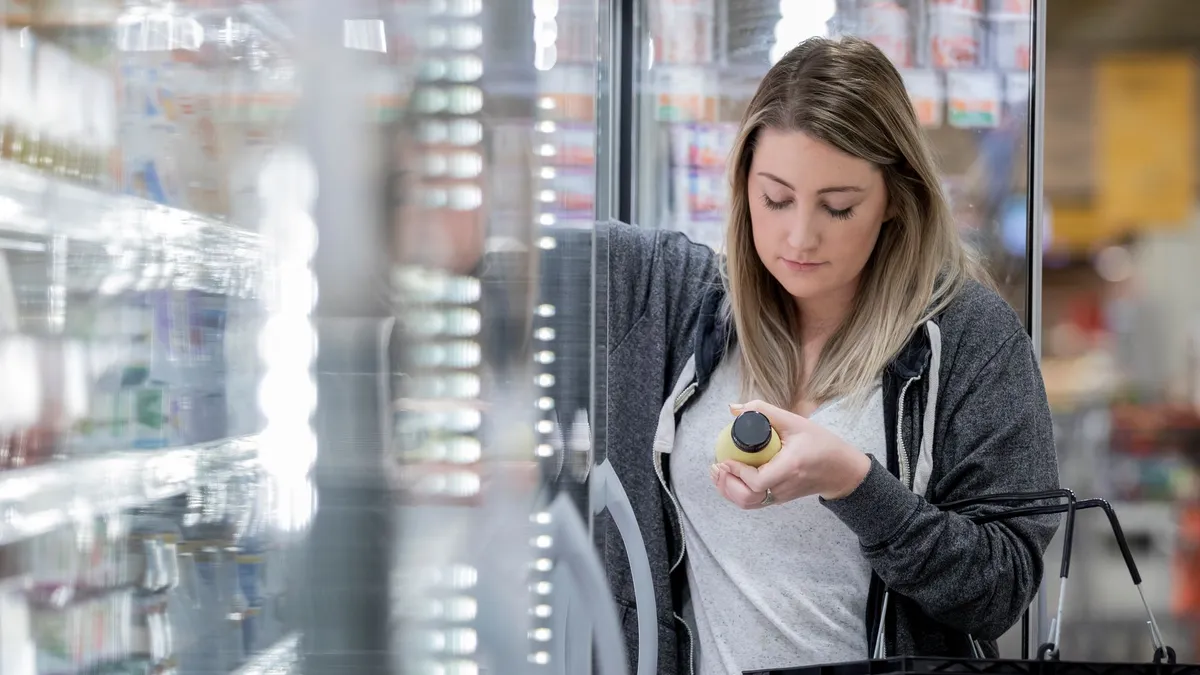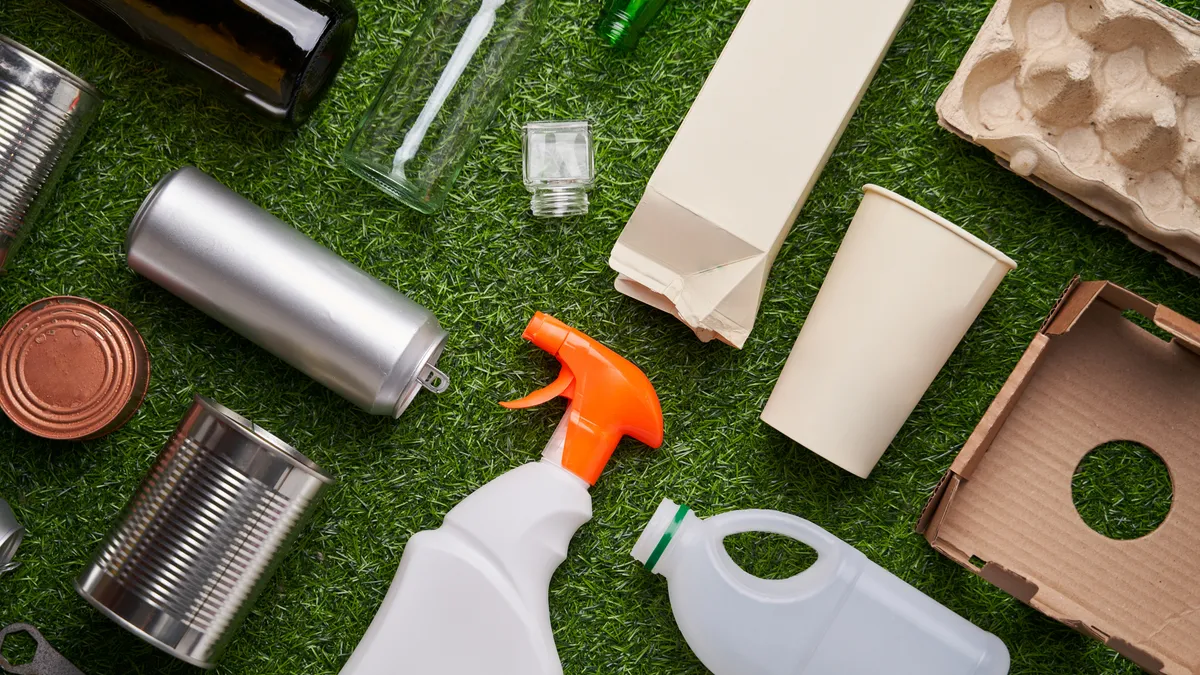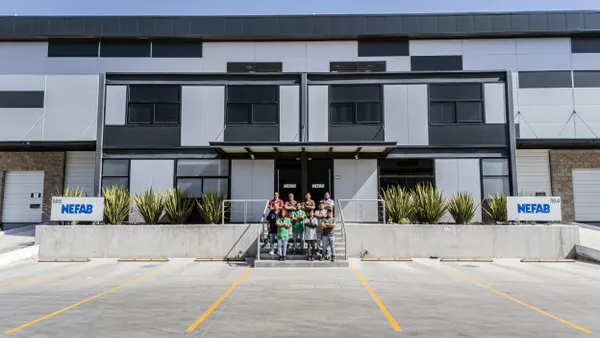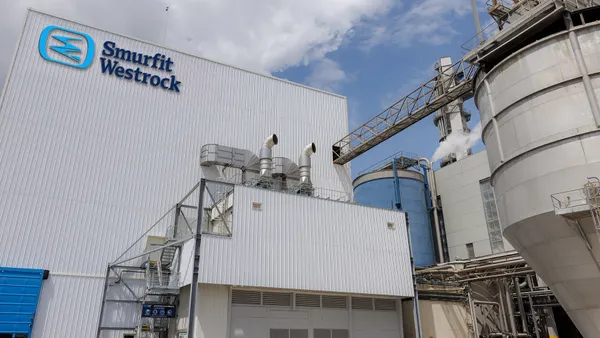Dive Brief:
- Origin Materials announced this week it’s created a cap for plastic bottles made entirely of PET. Caps for PET bottles commonly are made from HDPE or PP, but the company says the PET versions are more sustainable.
- Origin’s primary impetus for developing the cap was to offer bottle customers a complete monomaterial solution, considering the improved recyclability of monomaterials compared with mixed materials, said co-founder and co-CEO John Bissell. The caps can be made from any type of PET, including recycled and bio-based.
- The company is not yet producing the PET caps at a commercial scale, but Bissell expects to achieve that within 12 to 18 months.
Dive Insight:
Origin isn’t touting this innovation as the first-ever PET cap, but rather an option that’s not commonly available in the market and could be transformational for the sector, Bissell said.
“It's not as though we're the first people ever to try to make a PET cap for bottles. ... It’s that they weren’t successful for a variety of reasons,” Bissell said. “That's what we really solve — we're processing the material differently so that we can get to a cap economically that fits to an 1881 standard bottle.”
“As we look at PET as a material for caps, there are some good applications for it,” said Scott Trenor, technical director at the Association of Plastic Recyclers.
Focusing on designing a monomaterial solution was important because “it can be pretty difficult to separate out those materials and treat them separately” after collection, Bissell said. Multimaterial packaging, from layered chip bag films to polycoated paper cups, adds complexity to recycling processes, and much recycling infrastructure currently in place isn’t equipped to adequately handle it. “We always strive for monomaterial packaging,” Trenor said.
But he said a more significant barrier to greater plastic bottle cap recycling is the item’s small size. This often prevents them from making it through a MRF. Disposing of caps is a lost opportunity to capture a valuable commodity, considering a cap comprises 10% to 15% of a plastic bottle’s weight, according to Trenor. Therefore, APR pushes for consumers to keep caps on bottles to increase the items’ reclamation and recycling — even if the cap and bottle are made from different materials.
“There's kind of a lot of misinformation or misconceptions about that whole process with cap recycling,” said Kara Pochiro, vice president of communications and public affairs at APR. “[Caps] will get recycled if they’re attached to the bottle and put in the recycling stream.”
Tethering caps to the bottle is one way to ensure they’re recovered, and the concept is included in EU single-use plastic legislation set to take effect next year. Tethering keeps the cap affixed to the bottle with the plastic tamper-evident band once a user breaks the band upon opening the bottle. Tetra Pak is among the companies preemptively introducing tethered caps, as is Berry Global via a partnership with Coca-Cola. Bissell said tethering will be an option for Origin’s PET cap customers.
Bissell said the plants for manufacturing Origin’s PET caps will be different from the company’s biomass-based PET component plants — Origin 1, which began operations this summer, and Origin 2, where operations are expected to begin in 2025. The cap production will involve “much more straightforward kind of equipment,” such as extruders, which have a shorter design and construction time frame.
Origin 1 produces chloromethyl furfural as an intermediate component of PET used for packaging. Instead of fossil fuels, the feedstock is biomass including pulp mill residuals and agricultural residuals like corn stover. Although Bissell said PET cap production does not have to wait for material from Origin’s other plants because the caps can be made from many types of PET, APR’S Trenor pointed out that the use of bio-based material is the main feature Origin brings to the table.
“Origin is doing a great job in using non-fossil-based materials to produce drop-in replacements for PET,” Trenor said. If the company scales and meets metrics in its life-cycle analysis, “they can help us produce packaging that's compatible with the current recycling stream and have a lower carbon footprint.”



